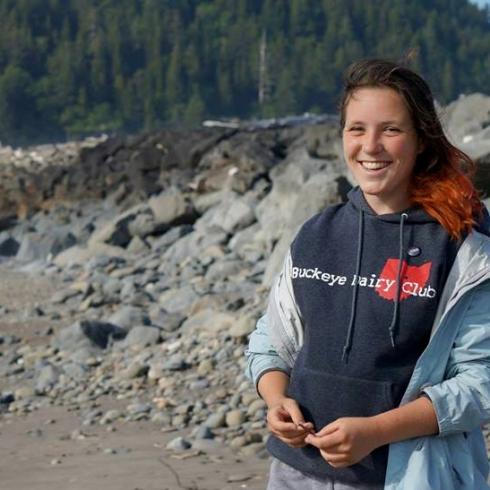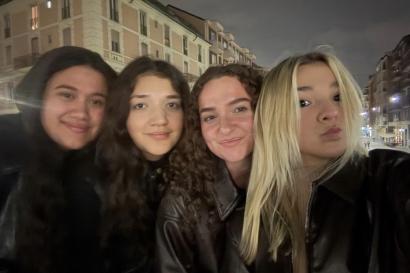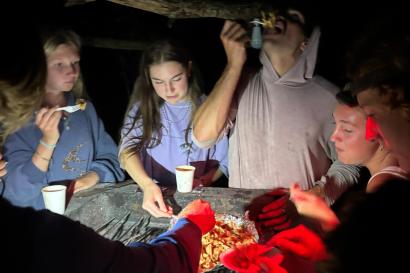The following is a photographic field journal from the week my botany class spent on Santa Cruz Island.

Reserva Pájaro Brujo is an 80-hectare farm, owned by National Geographic and run by FUNDAR. High-schoolers with machetes and cattle are clearing the invasive elephant grass and guava trees patch by patch. Notice the giant tortoises on the right!

Wild giant tortoises are helping remove the elephant grass as well.

The goal is to reforest 60 hectares with native Scalesia pedunculata (daisy trees) and to raise organic vegetables on the other 20 hectares.

Endemic species like this white-cheeked pintail are already abundant in the ponds. Our guide told me the population of vermillion flycatchers (the small red bird for which the reserve is named) has increased from 1 individual to 4 since the project began in 2004.

This image was taken on the path to El Puntudo, the highest point on Santa Cruz. The National Park killed thousands of invasive quinine trees here with hand-applied herbicides, leaving behind this ghostly landscape.

Finch species are so hard to tell apart! But I’m almost sure this is a warbler finch.

I think this might be a small tree finch.

This might be a vegetarian finch. According to my guide, it’s known as “the turkey of the finches” for its large size.

I found this male cactus finch (maybe?) at a restaurant in town.

This is one of two colossal sinkholes known as Los Gemelos, the twins. The craters formed when a lid of heavy volcanic rock collapsed into hollows below. The walls are coated with endemic passion-fruit vines, but I saw a few invasive quinine trees as well.

Los Gemelos are surrounded by some of the last intact Scalesia forest in the Galápagos (the rest was cleared for agriculture.) Scalesia is an endemic genus in the daisy family. Don’t these trees remind you of giant daisies? There are 15 species and 6 subspecies of Scalesia in the islands, making for an excellent example of adaptive radiation. Driving through this part of Santa Cruz makes me so happy!

Munch, munch, I’m a tortoise. You a tortoise? Ok. Munch, munch.

We took a day trip to Floreana Island which is inhabited by 120 people. Our guide gave us an incredibly convoluted 45-minute lesson on Floreana’s history… Basically, a few crazy families settled here. The Whittmers carved this tiki head and various cave systems for living in. The vegetarian was poisoned by bad chicken. Almost everyone else died too. Except for the Baroness who fled to Tahiti with one of her five lovers. But she was never seen again. And the Whittmer family now runs the hotel in town. Or something like that?

We finished the day on Floreana snorkeling off a gorgeous beach! This Pacific green turtle has a nice hairdo of algae — almost as nice as Tiki Head’s fern ‘do.

Nina Finley
<p><span style="color: rgb(29, 29, 29); font-family: Arial, Verdana, sans-serif; font-size: 12px; line-height: normal; background-color: rgb(237, 237, 237);">Nina Finley is a sophomore at The Ohio State University. She ventured to the Midwest from her hometown of Seattle, Washington to major in Animal Sciences and Evolution & Ecology. She would like to become a livestock vet or marine biologist. When she’s not studying, Nina loves to play ultimate frisbee, watch birds and raise meat rabbits. She’s passionate about agriculture, nature and Spanish, all of which she hopes to explore in Ecuador. Join the journey as Nina traces Darwin’s path and explores the natural wonders of the Galapagos Islands!</span></p>







